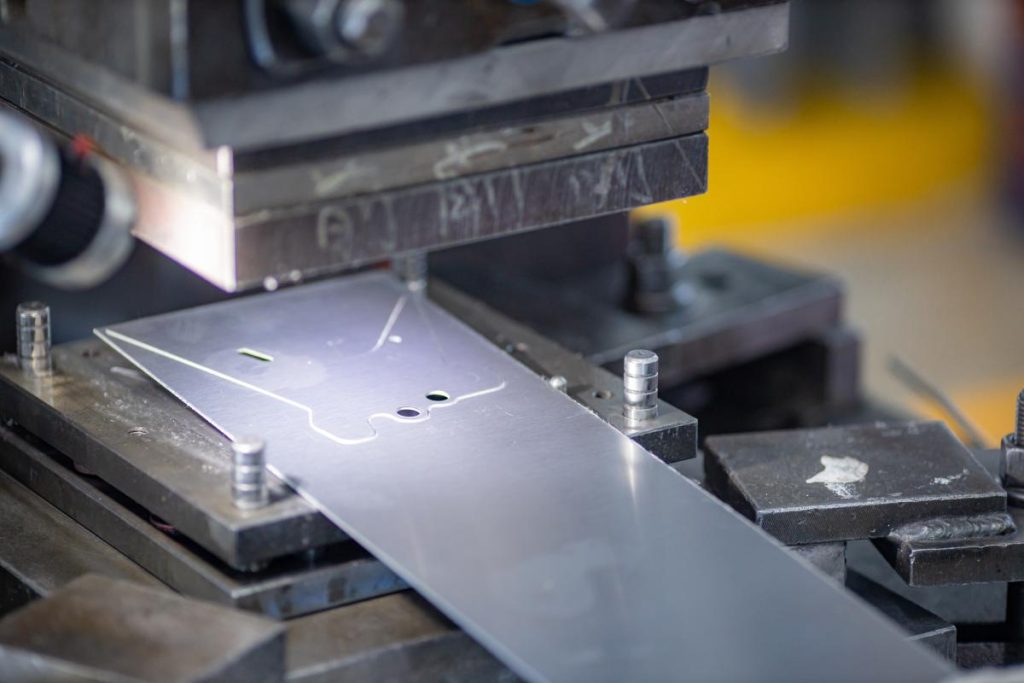When to Use Precision Die Cutting Over Laser or Waterjet Cutting?
Precision die cutting is a standard cutting method, alongside laser cutting and water jet cutting, and is particularly important in industries where speed, output, and edge quality are critical. Although each cutting method has its advantages, you must thoroughly consider cost control and material suitability before making a choice. Selecting the appropriate cutting method for your material can significantly enhance your production efficiency. What Each Cutting Method Offers Before comparing, let’s clarify the fundamentals. Precision Die Cutting uses a custom-made die to stamp or cut materials into specific shapes. It’s known for speed, repeatability, and tight tolerances. This method excels in high-volume production runs, particularly for flexible materials such as foam, rubber, films, and adhesives. On the other hand, laser cutting uses a focused beam to melt or vaporise material. It’s great for intricate patterns and more rigid substrates, but can slow down at scale. Waterjet cutting uses high-pressure water (sometimes mixed with abrasives) to slice through thick and rigid materials. It’s non-thermal, so it avoids heat-affected zones; however, the process is often slower and more costly than die cutting. Understanding these core differences sets the stage for choosing the right tool for the job. Often, it’s not about which method is better in general, but which one is better for you. Where Die Cutting Has the Edge If you’re running thousands of identical parts per shift, time is money, and Precision Die Cutting will save you a lot of it. Unlike laser and waterjet systems, die cutting doesn’t need reprogramming or digital file adjustments once the die is made. It’s plug-and-play efficient. Laser and waterjet machines, while flexible, operate more slowly on repetitive cuts. Each cut is performed individually, which adds up in long production runs. Die cutting, by contrast, can process sheets or rolls in one press action, drastically reducing cycle times. Moreover, die cutting scales easily with automation. From kiss-cutting labels to full-through cuts on gaskets, the repeatability is unmatched. So if your production line requires consistency and speed at scale, die cutting is often the optimal choice. Compatibility of different materials Certain materials play more nicely with Precision Die Cutting. Flexible and compressible materials—think silicone rubber, foam, paper, vinyl, and felt—respond well to die pressure. There’s little thermal distortion and minimal risk of burning or warping. Laser cutting, by comparison, struggles with materials that have high melting points. Thin films might deform. Heat-sensitive adhesives can lose their stickiness. Waterjet cutting is more material-agnostic, but it can be overkill for soft materials and introduces moisture, which might affect adhesives or absorbent substrates. When working with smooth, layered, or sensitive materials, die cutting delivers cleaner edges, fewer defects, and less post-processing. In such cases, it’s not only faster—it’s smarter. How Die Cutting Keeps It Tight In manufacturing, precision isn’t optional—it’s essential. Precision Dies Cutting lives up to its name by consistently delivering parts within tight tolerances, often to within ±0.1mm, depending on the material and die quality. Once a die is manufactured, every cut is identical, provided that the machine is calibrated correctly and maintained. Laser and waterjet cutting are also precise, but they can introduce variability. For example, laser cutting can leave heat-affected edges that require smoothing. Waterjet can suffer from tapering as the stream loses pressure or the nozzle wears out. Both methods rely on computer control, which can drift over time without recalibration. For parts that must fit perfectly—like seals, spacers, and multilayer components—die cutting ensures that the first part matches the tenth part. If accuracy over long runs matters, die cutting earns its keep. A Major Win for Die Cutting at Volume Let’s talk dollars. The upfront cost of a Precision Die Cutting tool might seem like a barrier, especially when compared to digital methods with minimal setup. But over time, the economics flip—hard. Once the die is made, the cost per part drops significantly. Operating costs are low, maintenance is simple, and waste is minimal. Die-cutting machines don’t need expensive lasers or pumps, and energy consumption is modest. This makes die cutting ideal for large-volume, low-margin parts. Laser and waterjet systems shine in prototyping or low-volume custom work. But for businesses focused on bulk production, die cutting offers better ROI. The more you use the die, the cheaper each cut becomes. How Flexibility and Freedom Affect Efficiency Laser and waterjet cutting offer unmatched design freedom. You can switch between patterns with a few keystrokes. Need a sharp corner, odd radius, or intricate lattice? No problem. However, sometimes too much flexibility can be inefficient. Precision Die Cutting is ideal for simple or moderately complex shapes that are repeated at scale. While the die limits you to a fixed design, that rigidity is precisely what gives you speed, consistency, and efficiency. If your parts don’t need constant design tweaks, investing in a custom die pays off. In short, die cutting is the champion of high-volume, standardised manufacturing. If your production line values repetition over variability, there’s no contest. Environmental and Cleanroom Considerations Another critical factor: cleanliness. Precision Die Cutting generates little to no dust, smoke, or water residue. This makes it highly suitable for medical, pharmaceutical, and electronic manufacturing environments, particularly in cleanrooms. Laser cutting produces fumes and particulates that require ventilation. Waterjet cutting involves a high-pressure water spray and an abrasive slurry. Both introduce contaminants, and both require more cleanup and filtration systems. Die cutting’s dry process, combined with its adaptability to roll-to-roll or sheet-fed formats, ensures minimal environmental disruption. For manufacturers operating in sensitive environments, that’s a clear-cut advantage. When to Prioritise Precision Die Cutting In large-scale production, precision die-cutting is the top choice for manufacturers who value speed, consistency, and efficiency. When you’re working with flexible materials, high-volume parts, or cleanroom environments, die-cutting outperforms lasers and waterjets in both cost and quality. While it lacks the flexibility of digital systems, its reliability and repeatability make it the method of choice for many industries.

